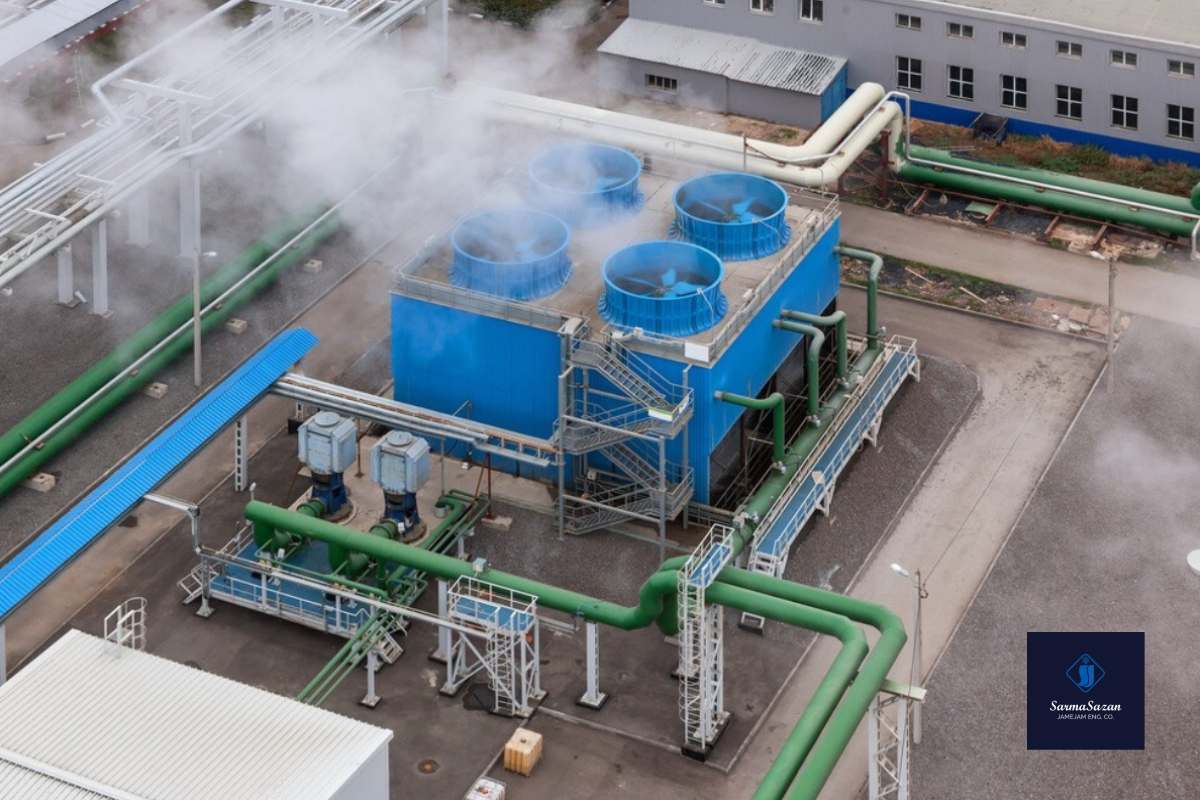Industrial processes and machines generate so much heat that it is necessary for efficient operation to direct that heat out of the machine or process. The heat must reach the environment. This transfer is done through the heat exchange process, which is the basis of industrial cooling tower technology. Interestingly, despite the fact that cooling towers are twentieth-century devices, knowledge about them is actually limited. Some people even believe that cooling towers are sources of pollution, but the only thing they transmit to the atmosphere is water vapor!

Types of industrial cooling towers
After years of development of this technology, cooling towers are available in different types and sizes. Each of these can be used in a specific load configuration, so it is important to select the available options as needed. Note that despite the different designs, the main function as heat dissipator from the building system or process to the air is returned to the environment through evaporation. There are several common categories used in industrial cooling towers:
- Mechanical design cooling tower
- Atmospheric cooling tower
- Hybrid design cooling tower
- Air flow design cooling tower
- Building cooling tower
- Cooling tower with special shapes
- Cooling tower based on heat transfer method
Each of these can include several types of cooling towers. For example, the classification of cooling towers in terms of heat transfer method offers three sub-categories:
- Dry cooling towers
- Open circuit cooling towers
- CCTV cooling towers (fluid cooling towers)
How the industrial cooling tower works
Hot water from industrial equipment, commercial AC systems or any other heat source enters the tower and is distributed evenly on top of it. As water descends from the tower, the filled equipment spreads it widely to increase air contact, thus increasing heat transfer through evaporation. A large amount of air is constantly moving along the tower’s powerful fans. By evaporation, water loses heat. Finally enters the tank of the tower at the bottom. The cold water is then returned to cool the original heat source and the cycle is repeated. In order to dilute the system, part of the system water is drained through an outlet valve. The makeup line feeds the cooling tower with fresh water to refill it. You will not easily notice these processes because only their simultaneous occurrence creates a continuous and visible loop.
Efficient operation of the cooling tower
Cooling towers are more economical than other products for industrial cooling, but are not a viable option. It is important to pay attention to the efficiency factor because it involves the following:
- Reduce water consumption
- energy saving
- Increase the useful life of equipment
- Reduce operating costs

Three things are important for the efficient operation of a cooling tower:
- Understand the type of cooling tower you are using
- Use chemicals effectively
- System water loss tracking
Industrial application of cooling towers
Cooling tower systems are common in many industries, the most important of which are power plants, commercial premises, air conditioning systems and factories and industrial premises.
Other industrial applications:
- Cold water compressors
- Plastic injection and molding machine
- Mold casting machine
- Refrigeration and cooling plant
- Refrigerator
- Anodized Process Factory
- Power plant
- Cold water air conditioners
A common question: cool air chillers or cold water chillers ?!
In fact, each has its advantages and disadvantages, but in dry areas, cool air chillers are often preferred. Also, when the factory or place of use does not have reliable water access, cool air chillers should be used so as not to damage the chiller system. One of the main differences between the two systems is the lack of a cooling tower in the air-cooled chiller system, which has advantages such as less maintenance and service.

 English
English  فارسی
فارسی 



